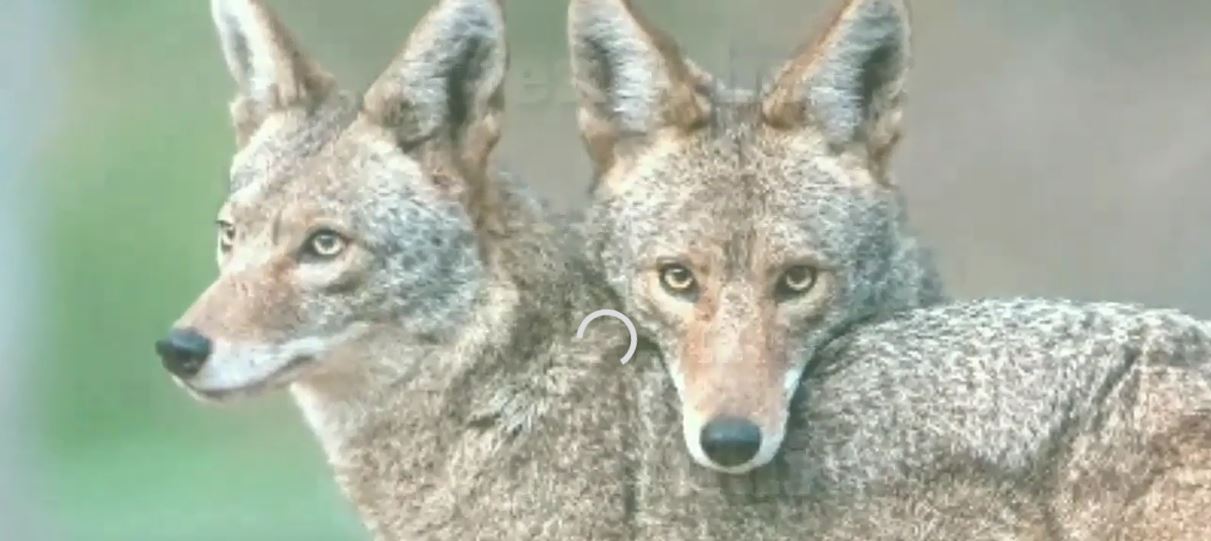About Coyotes: Appearance, Biology, Life Cycle, Habitat, Diet, And Behavior

Coyotes, also known as prairie wolves, are a native species in Central and North America. They are separate from European gray wolves with unique pack structure, ecology, and vocalization patterns. The scientific name of coyotes, Canis latrans, translates to “barking dog.” Depending on where in the country you live, you may have to deal with the occasional coyote on your property. Knowing more about these animals can give you an idea of what precautions to take and how to deal with them.
Appearance
In terms of size, coyotes are similar to medium dogs, with a length of between 32 and 37 inches between their head and rear. Their tails are around 16 inches long and the animals typically weigh between 20 and 50 pounds. Northern coyotes will generally reach larger sizes than southern ones while Eastern coyotes are the largest. The colors of the coyote depend on where you are. Northern animals tend to be white to pale. Western ones will have black markings and a reddish hue. Plains coyotes tend to be a plain gray-brown, although you may occasionally spot a black coyote in the eastern or great plains states.
Coyotes are known for narrow and elongated spots on the end of their lean bodies with thick fur. Their eyes are amber or yellow and their tails are long and bushy. They have five digits on their forefeet, which includes the dewclaw and four each on their hind feet. When coyotes walk, only their toes touch the ground.
Biology And Life Cycle
Coyotes breed between February and March and then during the spring, the females will build a den to prepare. After a gestation period lasting 63 days, the mother coyote will give birth to between three and 12 young, known as pups. Collectively, the pups make up a litter. There will typically be smaller litters in areas with many coyotes and larger litters in areas with less.
Both parents raise their young together. The male brings food to the pups and mother and helps keep them safe. Meanwhile, the female will stay with her babies until they are 11 to 12 days old and have opened their eyes. The pups can hunt by themselves by the fall. Coyotes can mate once they are between 20 and 22 months old and will typically live 14 years in the wild.
It is possible for a coyote to mate with a dog, leading to a coydog. There are not many coydogs since they typically mate and give birth in the winter, reducing the chances of survival of the pups. Additionally, the male coydogs don't typically help the female, further reducing their chances.
Habitat
Traditionally, coyotes make burrows that they dwell in. If possible, they will take over an empty badger burrow, but they can also make their own burrows if necessary. Coyotes will use their den or burrow as the center of their territory, which can extend up to 12 miles depending on the amount of food available. If the area is overpopulated, male coyotes have been known to travel 100 miles for food.
Historically, coyotes lived in open deserts and prairies. Today, they live in mountains and forests. Coyotes have even adapted to live in suburban areas as well, so don't be too surprised if you spot one drinking from your backyard pool.
Diet
Although they have a reputation of only eating meat, coyotes are omnivores. They will eat small game like rabbits, frogs, fish, and rodents as well as larger animals such as deer. These animals will also eat smaller items such as insects, snakes, grass, and fruits. Coyotes' diets can cause issues anywhere humans are found as they may kill livestock, pets, pet food, and garbage.
Behavior
When running, coyotes can go up to 40 mph and maintain this speed for an extended amount of time. The coyote can even jump 4 meters high. These animals also have an excellent sense of smell and keen vision.
Although coyotes were historically nocturnal, some will come out during the day if they are in an area where humans do not pose a threat. These animals are still nocturnal in areas where humans hunt or trap them, however.
These big dog-like animals communicate primarily by making noises. Howls are used to tell where they are located while huffing noises can call their pups. They will frequently bark to tell others to keep away.
These animals typically live in a pair with their mate, but a loose pack structure tends to develop in areas with larger prey or in the winter. When issuing a threat, coyotes will gape their jaws and arch their backs. Their tails are also used as part of a threat display as they will hold it horizontally and it becomes bushy. Ear movements can show rank and mood as well. Coyotes mark their territory using urine.
Read the Pest Wildlife Home Page page for helpful information and to learn more about About Coyotes: Appearance, Biology, Life Cycle, Habitat, Diet, And Behavior

